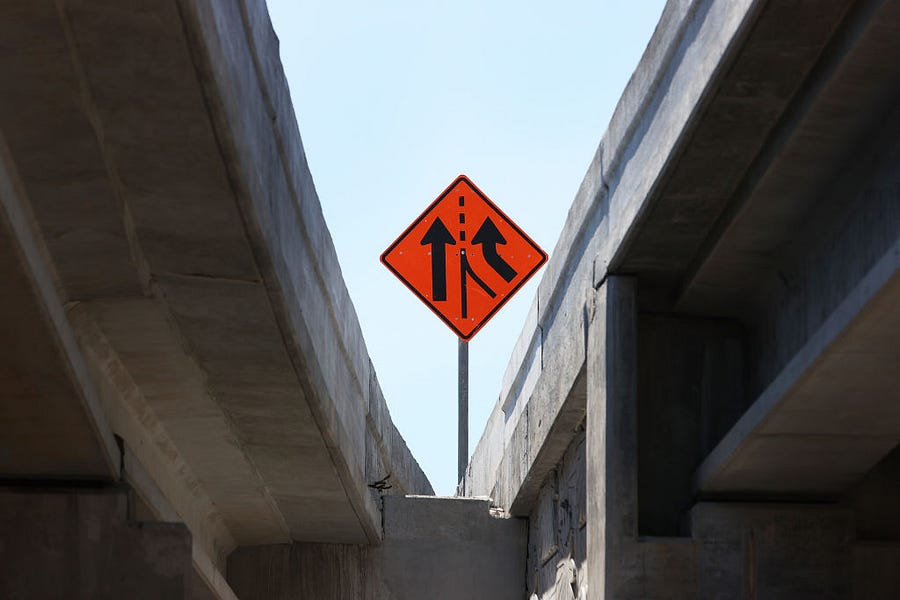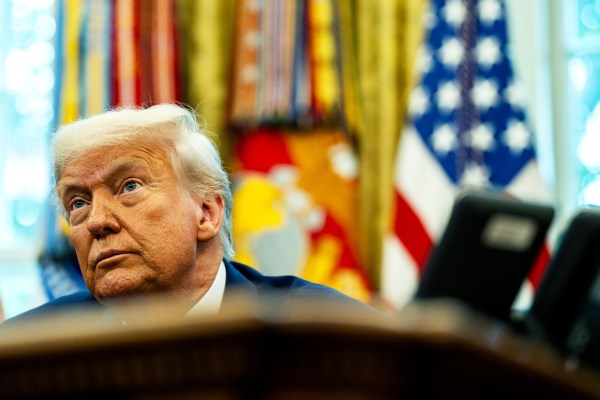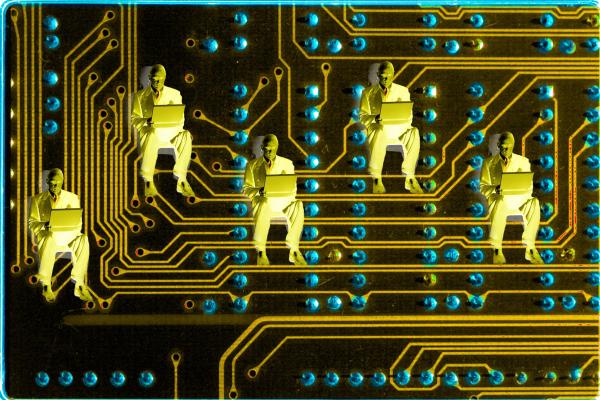With a September deadline looming, congressional staffers have been hard at work turning the infrastructure framework laid out last month by a group of bipartisan lawmakers into actual legislation. If some version of that framework becomes law, billions of our tax dollars will make their way from D.C. to congressional districts around the country. But how does that work, in practice? We know how a bill becomes a law, but how does a vote in Congress turn into a paved highway?
First, Congress isn’t pursuing infrastructure on a whim or because the president has a soft spot for Amtrak—we were due for infrastructure spending this year anyway. Congress passes standalone surface transportation bills every five years or so, which always get strong bipartisan support. These bills authorize spending levels for federal transportation programs. The most recent such bill expires on September 30.
While some infrastructure items are managed directly by the federal government—about half of the goods purchased by American consumers pass through ports and harbors maintained by the Army Corps of Engineers, for example—the vast majority of infrastructure projects are carried out by states and localities. Each state is required to maintain a project list known as a State Transportation Improvement Program, or STIP. To receive federal funds, a project must be part of a STIP.
“The core highway and transit programs are federal aid programs whereby the state DOT or local transit agency selects and designs projects, subject to USDOT approval, and then the state or local agency builds the project,” Jeff Davis, a senior fellow at the Eno Center for Transportation, told The Dispatch in an email. “Each time the state or local agency pays a contractor or makes a purchase for that project, they email a voucher to USDOT, and USDOT then wires them money (usually same-day or next-day) to pay for a fixed share of the project (usually 90 percent for an Interstate Highway project, and 80 percent for any other kind of project).”
The federal dollars come from the Highway Trust Fund, which dates back to the Eisenhower administration and is funded through federal gas taxes. The money in the fund is split into two buckets—one for highway transportation, and a smaller one for other types of transit—and it is disbursed to the states via two main types of grants.
While some grants require states to compete for funds—particularly grants used to pay for “multimodal” projects involving more than one type of transportation—most true highway spending comes from formula grants: Money is “apportioned between states based on a formula that at this point is over a decade old,” Andy Winkler, an associate director for housing and infrastructure projects at the Bipartisan Policy Center, told The Dispatch. Although the formula is outdated, most politicians refuse to touch it. “It turns into a huge fight, because there are winners and losers when you start to tweak how you apportion money.”
State DOTs usually get their way—but that might be changing. “For highway projects, even though the law has always given the federal government the ability to turn down projects selected by the states, there has been a strong culture of deference to state decisions unless the law specifically gives USDOT a stronger role,” Davis said. Earlier this year, however, the Biden administration paused a highway widening project near Houston on civil rights grounds because it would displace mostly black and Hispanic residents and businesses, signaling that the USDOT may look at future state requests with a more critical eye.
Still, states—as well as local and regional metropolitan planning organizations (MPOs)—play an active role in deciding how to use the Highway Trust Fund money that gets allocated. Some dollars are used by states directly; others end up in the private sector when states contract with private companies for construction or other services.
Winkler said the current bipartisan infrastructure plan differs from past surface transportation bills in two main ways. The first is that it’s not pure surface transportation: this year, “the transportation reauthorization is being negotiated and developed along with other types of infrastructure,” including water and broadband.
The second difference is that the negotiation is happening outside of the traditional committee process. Instead, a bipartisan group of senators has worked directly with the White House. As Yuval Levin wrote for National Review last week, this approach has its pros and cons: “While such impromptu groupings can sometimes solve the political challenges of coalition-building, they can’t solve the substantive challenges of legislative drafting.”
Further challenges lurk beneath the surface as well. “The money coming into the Highway Trust Fund is not sufficient for the level of spending that we traditionally do, which has required essentially general transfers from the Treasury Department to bail out the trust fund,” Winkler said. A permanent solution to this problem will be difficult to find.
“Chopping off the tip of the iceberg doesn’t stop the underwater part from coming at you,” Davis said. “If you shut down the Highway Trust Fund tomorrow and said no more new projects would ever be approved from that day forward, the Trust Fund would still spend well over $100 billion over the next decade-plus paying off the obligations that were legally incurred up to today. And since the Trust Fund’s dedicated excise taxes only bring in $41 billion per year or so, you would have to leave the taxes in place for at least two and a half years were you to just shut things down and move on.”
The bipartisan bill likely won’t fix the longer-term problems of the Highway Trust Fund. But Winkler is encouraged by what he sees. Private infrastructure investment, public-private partnerships, and permitting reform all receive support in the bipartisan framework—and they could be critical for combating climate change. “If you’re going to decarbonize the economy by 2050 or sooner, [then] we’re going to need to build a lot of infrastructure much more quickly than we have traditionally, and the permitting and review process is a significant impediment to that.”
The House has already passed a surface transportation bill called the INVEST in America Act. But that bill lacks a revenue title from the Ways and Means Committee, meaning it doesn’t lay out how the new investments will be paid for. Winkler sees this as a ploy to keep the House involved in the negotiating process: Because all revenue-raising bills must originate in the House, the final bill will almost certainly have to be sent back to the lower chamber for input. Eventually, “the process for looping the various pieces together will most likely be handled by Senate leadership.”
If both chambers really are going to move together and pass a bipartisan bill before September 30, they’ll have to work quickly.






Please note that we at The Dispatch hold ourselves, our work, and our commenters to a higher standard than other places on the internet. We welcome comments that foster genuine debate or discussion—including comments critical of us or our work—but responses that include ad hominem attacks on fellow Dispatch members or are intended to stoke fear and anger may be moderated.
With your membership, you only have the ability to comment on The Morning Dispatch articles. Consider upgrading to join the conversation everywhere.